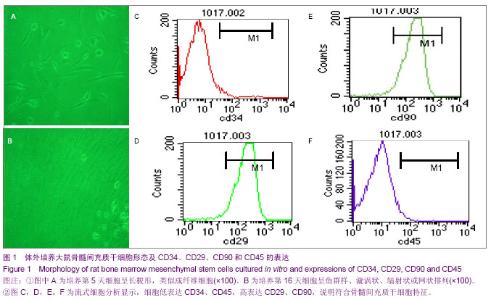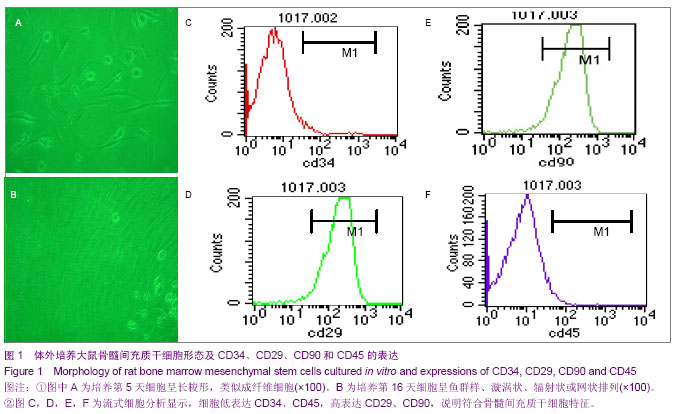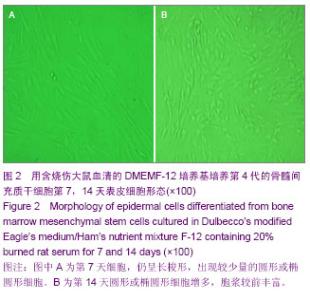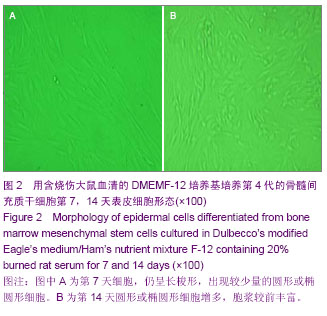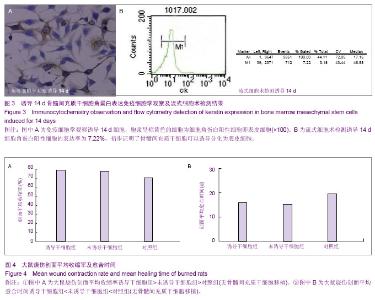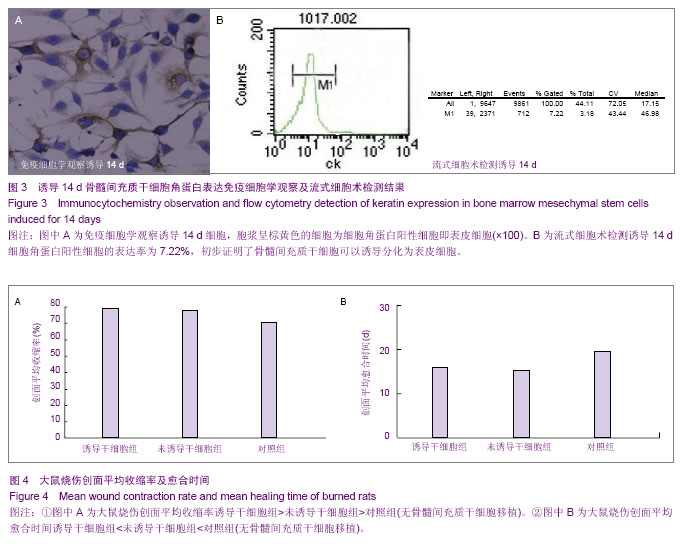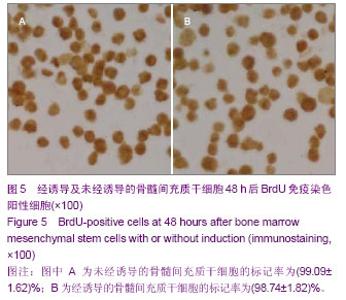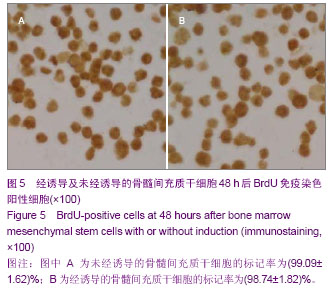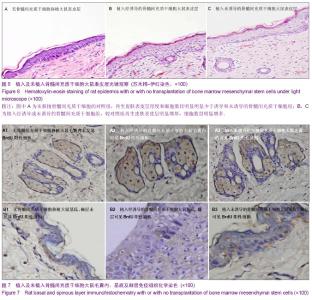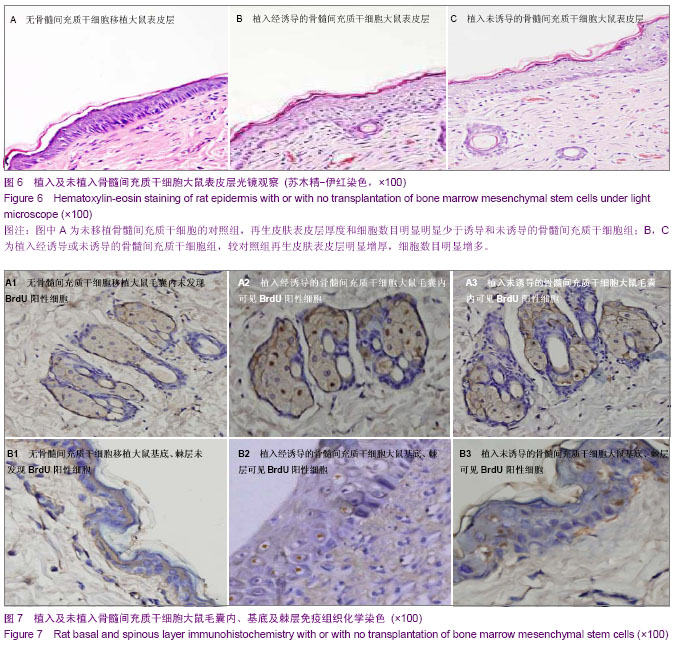| [1] 范子扬,宋振顺.骨髓间充质干细胞多向分化潜能和微环境关系的研究[J].现代肿瘤医学,2011,2(19):211-214.[2] Liu BW, Lü AN, Yan XB,et al. Cardiac electrophysiological characteristics after transplantation of differentiated bone marrow mesenchymal stem cells.Zhongguo Zuzhi Gongcheng Yanjiu yu Linchuang Kangfu.2011;32(15):6072-6076.[3] 邹海兵,禹志宏,王家宁,等.体外培养经皮移植自体骨髓间充质干细胞治疗四肢骨不连[J].郧阳医学院学报,2009,28(5):469-471.[4] 孙皓,左健.组织工程化软骨细胞和骨髓间充质干细胞用于修复同种异体关节软骨缺损[J].中国组织工程研究,2012, 19(16): 3602-3605[5] Huo X, Zhang Q.Autologous mesenchymal stem cell transplantation induces angiogenesis in rat ischemic limbs Significance of monocyte chemoattractant protein-1 changes in plasma and ischemic tissues.Zhongguo Zuzhi Gongcheng Yanjiu yu Linchuang Kangfu.2009;49(13):9771-9774.[6] 宋杰,王丽,冯宁,等.大鼠骨髓间充质干细胞的培养及其向神经元样细胞诱导分化的实验研究[J].泸州医学院学报,2011,2(34): 122-124.[7] 陈鹏飞,吴小翎,周伟,等.大鼠骨髓间充质干细胞向肝样细胞的定向诱导分化[J].中国生物制品学杂志,2011,1(24):20-24.[8] 张杭,孙天威.骨髓间充质干细胞分化为神经细胞研究进展[J].国际骨科学杂志,2011,2(32):104-107.[9] 牛萍,赵月强,张端莲,等.骨髓间充质干细胞分化为心肌细胞过程中Notch表达的研究[J].中国组织化学与细胞化学杂志, 2011, 6(20):543-548.[10] 康少平,姜文静,李萍.骨髓间充质干细胞向内皮细胞的分化和临床应用[J].中国组织工程研究与临床康复,2011,49(15): 9279- 9282.[11] 余瑞新,杜远立.骨髓间充质干细胞向软骨分化的研究进展[J].中国医药导报,2012,1(14):94-95.[12] 田甜,贾赤宇.骨髓间充质干细胞诱导分化为血管内皮细胞在组织损伤修复中的研究现状[J].中华损伤与修复杂志,2012,4(7): 418-421.[13] 张诚,杨玉龙,林美举,等.体外诱导骨髓间充质干细胞向胆管上皮样细胞分化[J].中国组织工程研究,2013,1(17):17-22.[14] Makino S, Fukuda K, Miyoshi S, et al. Cardiomyocytes can be generated from marrow stromal cells in vitro.Clin Invest. 1999; 103:697-705.[15] 赵文婧,李琴,吴卓,等.心肌组织裂解液诱导骨髓间充质干细胞向心肌组织样结构的分化[J].中国组织工程研究,2012,10(16): 1729-1732.[16] 曹慧,仲晶飞,陈中华,等.黄芪诱导大鼠骨髓间充质干细胞神经样分化有效组分的研究[J].南通大学学报,2012,32(2):89-95.[17] 王宇,魏书艳,史小琴,等.三磷酸胞苷二钠诱导大鼠骨髓间充质干细胞分化为神经元样细胞的实验研究[J].中国现代医学杂志, 2011, 17(21):1970-1976.[18] 陈玉丙, 贾全章, 李东君,等.移植后的Wistar 大鼠骨髓间充质干细胞向神经元分化的实验研究[J].中国实验诊断学,2011, 8(15):1249-1251.[19] Zuk PA, Zhu M, Ashjian P , et al. Human adipose tissue is a source of multipotent stem cells.Mol Bio Cell.2002;13: 4279-4295.[20] Mizuno H, Zuk PA, Zhu M, et al. Myogenic differentiation by human processed lipoaspirate cells.Plast Reconstr Surg. 1999;109:199-209.[21] Xiu ZB, Lin JH, Wu ZY,et al. Effect of pilose antler polypeptides on chondrogenic phenotype differentiation of bone marrow-derived mesenchymal stem cells in vitro.Zhongguo Zuzhi Gongcheng Yanjiu yu Linchuang Kangfu. 2011;19(15):3563-3566.[22] 项鹏,张丽蓉,陈振光,等.成人骨髓间充质干细胞定向诱导为脂肪细胞的研究[J].中国病理生理杂志,2001,17(7): 598-601.[23] 金丹,裴国献,王前,等.骨髓基质细胞体外培养骨发生潜能及条件研究[J].中国矫形外科杂志,2000, 7(6):565.[24] 卫金花,曲强,杨阳,等.体外三维培养骨髓间充质干细胞诱导分化为肝细胞及其极化特征[J].基础医学与临床,2012,6(32):639- 643.[25] Jin SZ, Liu BR, Xu J, et al.Ex vivo-expanded bone marrow stem cells home to the liver and ameliorate functional recovery in a mouse model of acute hepatic injury. Hepatobiliary Pancreat Dis Int.2012;1(11):66-73.[26] 韩冰,付小兵,梁雪梅,等.烧伤大鼠血清诱导骨髓间充质干细胞分化为表皮细胞和血管内皮细胞的实验研究[J].解放军医学杂志, 2004,29(8):652-654.[27] 陈国仙,王国荣,林宗锦,等.5-Brdu标记骨髓间充质干细胞修复椎间盘退变中的示踪研究[J].中国中医骨伤科杂志,2013,1(21): 205-208. |
